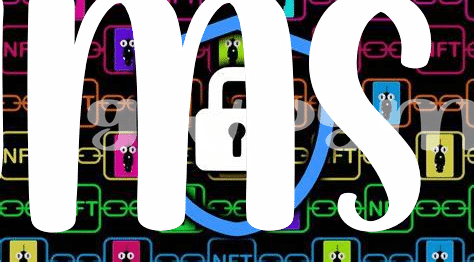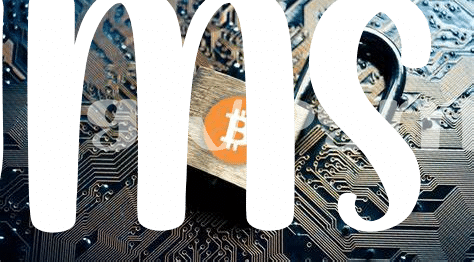🖼 the Basics of Nfts: More Than Just Art

Imagine a world where your favorite digital painting, tweet, or even a meme could be as valuable as a masterpiece hanging in a gallery. This isn’t a distant dream but the reality with Non-Fungible Tokens, or NFTs. Beyond just being digital art, NFTs are unique digital assets that represent ownership or proof of authenticity of virtually anything online, thanks to a special kind of digital code. Imagine buying an exclusive piece of digital art and having a special digital token that says, “Yes, this unique piece is yours, and here’s the proof!” It’s like having a digital certificate of ownership. But NFTs aren’t limited to art. From tweets and blog posts to virtual real estate and digital fashion, they’re redefining ownership in the digital age, making it possible to own, sell, or trade almost anything online. Here’s a closer look at how these digital treasures stack up:
| Type of NFT | Examples |
|---|---|
| Art | Digital paintings, animated GIFs |
| Collectibles | Virtual trading cards, special edition items |
| Virtual Real Estate | Lands in virtual worlds |
| Domain Names | Crypto domain names |
As the boundaries of what can be owned and collected in the digital space expand, NFTs are paving the way for a new era of digital ownership, far beyond just the art world.
🔓 Unveiling Hidden Risks: the Dark Side of Nfts
Delving into the world of NFTs, it’s not all bright and shiny as it appears. Imagine owning a unique digital artwork, only to wake up one day and find it’s vanished into thin air. This dark side of NFTs unveils a realm of hidden risks including scams, hacks, and unexpected vulnerabilities. Real stories abound where collectors faced the nightmare of losing their prized digital assets to cleverly disguised threats. It’s a stark reminder that what’s considered secure in the digital world can sometimes be as fragile as glass. To add perspective, consider how digital currencies, similar to NFTs, navigate through their share of challenges and evolution, as detailed in this insightful article [https://wikicrypto.news/the-evolution-of-bitcoin-from-novelty-to-valuable-asset](https://wikicrypto.news/the-double-edged-sword-of-bitcoin-on-the-dark-web). Understanding these vulnerabilities is crucial to not only protect your treasures but to appreciate the complexity and ever-evolving nature of digital ownership.
🕵️♂️ Real Stories: When Nft Security Failed

Diving into the world of digital assets reveals some eyebrow-raising stories that spotlight the bumpy road NFTs have traveled. Imagine waking up one day to find your exclusive digital artwork, which you thought was as secure as a vault, has vanished into thin air. This isn’t just a nightmare scenario; it’s happened. From artists seeing their creations duplicated without permission to collectors discovering their one-of-a-kind pieces being flaunted by someone else across the globe, the incidents shed light on the lurking vulnerabilities in the NFT space. In one notable case, a platform glitch allowed a user to snatch an NFT for less than its market value, leaving the original owner in disbelief. These tales aren’t just cautionary; they remind us that in the shiny new world of NFTs, the locks are still being tested.
🔧 Keeping Your Digital Treasures Safe: Tips and Tricks

Imagine finding a rare digital gem online, treasured not just for its uniqueness but also for its potential value uplift. However, just like precious jewels in the real world, these digital assets are not immune to threats. Cyber-thieves are constantly on the prowl, looking for the slightest crack in the digital vault to snatch away these treasures. To safeguard against such threats, employing robust security practices is crucial. Simple steps such as using strong, unique passwords for your digital wallets, enabling two-factor authentication, and regularly updating the software can make a significant difference in protecting your assets from digital bandits.
For those looking to dive deeper into improving their digital asset’s security, particularly around bitcoin and the dark web security concerns, it’s vital to stay informed about the latest developments in blockchain security. Engaging with the community and following security best practices can significantly mitigate risks. Additionally, storing your assets in cold wallets, which are not directly connected to the internet, can provide an extra layer of security. Remember, in the digital world, your vigilance is the key to keeping your treasures safe. Educating yourself and staying updated on potential vulnerabilities can help you enjoy the benefits of digital assets with peace of mind.
💡 the Future of Nft Security: What’s Next?
Looking ahead, the security of digital assets, especially NFTs (non-fungible tokens), is gearing up for an exciting journey. As we dive into a world where digital collectibles can be as valuable as physical treasures, the need for robust security measures has never been more critical. Imagine a future where advanced technology like AI (Artificial Intelligence) and blockchain enhancements work hand in hand to safeguard our digital possessions. These innovations promise to create a fortress around our assets, making them nearly impenetrable to hackers and cyber threats. Furthermore, the collaboration between tech communities and cybersecurity experts is paving the way for new standards and protocols that will fortify the digital world against emerging threats. This synergy aims to ensure that your digital treasures remain safe, letting you enjoy the true value of your assets without worry. Here’s a quick look at what we can expect:
| Tech Advancement | Impact on NFT Security |
|---|---|
| AI & Machine Learning | Proactive threat detection and instant response actions |
| Blockchain Enhancements | Increased transaction security and verification processes |
| Community & Cybersecurity Collaboration | Development of new security standards and protocols |
In this unfolding scenario, the emphasis is not just on reacting to threats but on creating a secure ecosystem where your digital assets can thrive safely.
🌍 Nfts and Cyber Laws: Navigating the Legal Landscape

As the world of digital art and collectibles grows, so does the legal framework surrounding it. Navigating these new waters can be tricky, especially when it comes to the protection and regulation of non-fungible tokens (NFTs). Laws are starting to catch up, aiming to offer safeguarding against theft and fraud, but there’s a lot of gray area. Think of NFTs as unique digital treasures, each with its own set of data proving who owns it. But just like in the physical world, proving ownership and dealing with theft in the digital sphere requires solid legal support. Cyber laws are evolving to include NFTs under their umbrella, focusing on copyright issues, ownership disputes, and ensuring creators’ rights are protected. However, the speed at which technology advances often outpaces that of legal adjustments, leaving gaps that can be exploited. Meanwhile, the concern for securing digital assets isn’t limited to NFTs alone; even the broader blockchain and cryptocurrency spaces face similar challenges. For a deeper dive into the security concerns related to storing value in digital currencies, a solid starting point could be understanding bitcoin as a store of value security concerns. This knowledge is not only crucial for those invested in cryptocurrencies but also offers insights into the broader issues of digital asset security that can apply to NFTs. As we move forward, keeping abreast of both technological and legal developments will be key in navigating this complex landscape safely.
